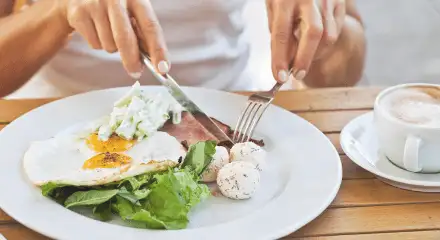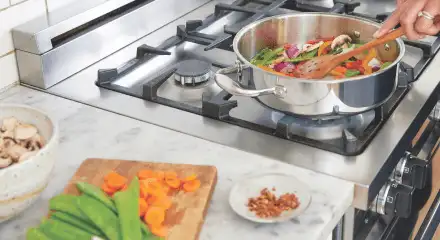Contents
What Are Muscle Cramps, and When Do They Occur?
Muscle cramps are sudden and involuntary contractions of a muscle or group of muscles. They can occur at any time, but they are most common during the night.
A muscle cramp is defined by a sharp, intense pain in your muscle that can last anywhere between a few seconds to 10 minutes. Other symptoms that may accompany these muscle contractions include:
- A feeling of tightness
- A visible, throbbing lump under the skin
- Difficulty moving the affected muscle
These symptoms may appear on any muscle in the body, but some of the most common areas where muscle cramps occur include:
- Legs (calves, thighs, and feet)
- Arms
- Abdomen
- Ribcage
In most cases, these body aches go away on their own. However, there are some things you can do to get rid of cramps faster, like gently massaging the affected area or applying a warm compress.
Please seek immediate medical assistance if a muscle cramp doesn’t go away after 10 minutes.
There are many possible causes of muscle cramps, including dehydration, overexercise, and electrolyte imbalances. Additionally, certain groups, such as pregnant women and older people, may be at a higher risk of experiencing muscle fatigue.
Make sure to consult your physician if you are considering fasting and having prolonged cramping.
Take a
1-minute quiz
and discover how much weight you can lose with DoFasting!

Why Do Muscle Cramps Occur During Intermittent Fasting?
If done incorrectly, intermittent fasting can have uncomfortable side effects, such as dizziness, headaches, and muscle cramps.
Here are 4 main reasons your muscles can’t catch a break while intermittent fasting:
Electrolyte and mineral deficiencies
When fasting, your body loses a significant amount of fluids and electrolytes. This is partly because you abstain from food for 12 hours or more, and food accounts for around 20% of your overall fluid intake.
Electrolytes, such as sodium, potassium, and calcium, play an essential role in supporting muscle function. If you don’t replenish them, you risk developing electrolyte imbalances over time. This can lead to muscle spasms, one of their most common symptoms.
You’re not drinking enough water
Hydration is key, whether you’re fasting or not. Water is necessary for maintaining normal bodily functions and keeping you hydrated, so it’s not surprising that the human body wouldn’t survive without it for more than a few days.
As you may understand, it’s vital to stay hydrated while fasting. There are several reasons for this:
Firstly, while fasting, you’re not getting fluids from food. Thus, making a conscious effort to drink more water is crucial to make up for those lost fluids.
Secondly, dehydration affects body functions and may lead to several unwanted side effects, such as dry mouth, headaches, or fatigue. And, of course, it can also cause muscle cramps. You can avoid these adverse side effects by drinking enough water.
Sitting too long during fasting
More and more people are working office jobs where they spend most of their day sitting, sometimes without any breaks or a chance to stretch their legs. Researchers link long periods of sitting with various health concerns, one of which is muscle deterioration, which happens when your muscles waste away due to a lack of use. And when your muscles are weak, they become more prone to cramping.
Another reason why sitting in the same position for long periods of time can lead to muscle cramps is poor circulation. Sitting too long slows down your blood flow and may cause sudden cramps, usually in your legs or feet.
Too much vigorous exercise
Physical activity is essential for overall health and well-being, but intense workouts while fasting can lead to muscle fatigue and may even trigger muscle cramps.
Exercise-induced or exercise-associated cramping occurs either during exercise or immediately after it.
The exact cause of these cramps is not fully understood, but some studies show that it may be due to muscle fatigue and sweating.
Moreover, during exercise, especially strenuous exercise, you also lose fluids and electrolytes through sweating, which can lead to dehydration and electrolyte imbalances known to cause muscle cramps.
It’s important to keep in mind that if you’re doing an intense workout while fasting, you need to be extra careful about staying hydrated and replenishing your electrolytes, as it will help to prevent muscle pain.
Drinking water before, during, and after exercise and replenishing electrolytes via foods and supplements can help prevent dehydration and electrolyte imbalances, hence preventing cramps.
8 Tips To Avoid Cramps During Fasting
One of the best ways to deal with involuntary muscle contractions is to take the steps needed to prevent them from happening in the first place. Here are 8 tips to get you started:
1. Replenish lost electrolytes
If done incorrectly, fasting may cause electrolyte imbalances and mineral deficiencies, which are common causes of muscle stiffness. But don’t worry—there’s an easy fix.
- Stay hydrated — Make a conscious effort to drink more water than usual.
- Add a little bit of salt into your water — This can increase electrolyte levels.
- Drink electrolyte-infused water — Be sure to check the ingredient list, as many of these drinks contain added sugars.
- Eat foods rich in electrolytes after fasting — Once your fast is over, you can replenish electrolytes by eating foods rich in these minerals, such as bananas, leafy greens, avocados, nuts, and seeds.
- Drink electrolyte-rich beverages: Coconut water, milk, and sports drinks can also help replenish essential minerals after a fast.
2. Take apple cider vinegar
Diluted apple cider vinegar can help reduce cramping, as studies suggest that the acetic acid found in it can mitigate muscle pain.
Aside from preventing cramps, diluted apple cider vinegar can make it easier to manage time-restricted eating, especially as a beginner—apple cider vinegar has been shown to promote satiety, which can help you reduce feelings of hunger.
Additionally, apple cider vinegar can be consumed while fasting, unlike electrolyte-rich water, which would break the fast.
When consuming apple cider vinegar, it’s crucial to remember to dilute it with water before drinking, as it is acidic and can damage your teeth if consumed in high concentration.
3. Increase your water intake
It’s generally recommended to make a conscious effort to drink lots of water when fasting, as you lose more fluids during this practice than usual.
Dehydration has many uncomfortable side effects, one of which is pain in the muscles. This makes it crucial to stay hydrated to prevent muscle pains.
If you have difficulties drinking the recommended amount of water on a daily basis, try to develop a tracking system. DoFasting, an intermittent fasting app, allows you to log your fasts and track your water intake. You can also use it to set up daily reminders to drink a glass of water at specific times of the day.
Take a
1-minute quiz
and discover how much weight you can lose with DoFasting!

4. Eat high-magnesium foods
Diet plays a vital role in preventing muscle stiffness. One of the best ways to minimize the risk of getting a cramp is by providing your body with the essential minerals (electrolytes) it needs. Magnesium, potassium, and sodium are some of the most common electrolytes found in a variety of foods.
Some healthy sources of magnesium include:
- Cow’s milk
- Soymilk
- Brown rice
- Oatmeal
- Avocado
- Leafy greens (broccoli, spinach, or kale)
- Nuts and seeds (pumpkin seeds, chia seeds, almonds, cashew, and peanuts)
You can easily incorporate these foods into your meals, and if you’re unsure where to start, consider using DoFasting—a mobile app designed to make your intermittent fasting journey easier. DoFasting’s library holds hundreds of unique recipes to make during your eating hours, which will help to provide your body with the necessary electrolytes and nutrients for a healthy fasting journey.
5. Take a break from high-intensity exercise
Exercise is one of the best things you can do for yourself. It can help you manage weight, improve energy levels, and clear your mind. Most importantly, regular exercise may play a part in reducing the risk of chronic diseases.
Intermittent fasting and exercise go hand in hand in delivering these health benefits. However, not all activities are appropriate to do while fasting. Doing a high-intensity workout when you haven’t eaten in a whole day may negatively affect your energy levels, decrease your performance, and lead to body aches derived from muscle fatigue.
Research suggests that exercise-induced cramping may result from a combination of factors, such as increased sweating, electrolyte imbalance, and high room temperature.
Instead of doing high-intensity exercises, opt for low-intensity cardio workouts such as brisk walking, light jogging, or pilates. If you’re looking to exercise in the comfort of your own home, take a look at DoFasting’s workout library—it has a vast selection of low-intensity exercises that can be done while intermittent fasting.
6. Go for a walk to keep your body moving
A sedentary lifestyle and lack of exercise can increase the likelihood of experiencing muscle spasms. Regular physical activity is important for maintaining muscle and overall health.
Physical movement is a great way to alleviate body pains: when you walk, your muscles contract and lengthen, which serves as a way to massage them and improve circulation.
If you get a leg cramp, you can try to walk around to release the stiffness and alleviate the pain immediately. It may be difficult to force yourself to walk on a leg with a sore muscle, but it’s worth a try.
7. Stretch your body regularly
Stretching can increase blood flow and help your circulatory system to transport nutrients to muscles. If you spend most of your day sitting, you can improve circulation by doing some stretches.
Here are a few examples of stretching exercises:
- Standing toe reach — Stand with your feet hip-width apart. Straighten your back, lift your arms up, and slowly bend down. Keep your back straight and hold for up to 30 seconds.
- Shoulder stretch — Clasp your hands together behind your back and pull them up. Keep your hands and back straight throughout the whole stretch. Hold for up to 30 seconds.
- Hamstring stretch — Lie down on a mat and straighten your legs. Pull the right leg up towards the ceiling without bending it. Hold onto the back of your thigh or knee with both hands for support. Hold for 15 seconds and switch legs.
Before stretching, make sure to warm up by doing light cardio exercises such as walking/jogging in place, jumping jacks, or lunges. Your warm-up should last between 5 to 10 minutes.
8. Avoid alcohol
Generally, it’s not recommended to drink alcohol while fasting as it contains high amounts of sugar, which will break your fast. If you’re going to indulge in alcohol, you should do so during your eating hours and in moderate amounts.
It probably comes as no surprise that drinking alcohol has adverse side effects. But how does alcohol contribute to muscle pains?
Alcohol consumption has been linked to an increased risk of muscle cramping, especially at night. If you suffer from nocturnal leg pains, try cutting out alcohol and see if anything changes.
Drinking alcohol within 24 hours before your workout can lead to muscle fatigue and increase the risk of cramping in the middle of your training. This is because large alcohol consumption causes a build-up of lactic acid.
If you lead an active lifestyle, it’s best to avoid alcohol in general. And remember: don’t drink alcohol while fasting or a day before going to the gym.
Take a
1-minute quiz
and discover how much weight you can lose with DoFasting!

Fasting and Cramps: Key Considerations
Fasting may cause muscle stiffness due to several reasons. A lack of physical activity, inadequate hydration, and electrolyte imbalance are among the top reasons for muscle spasms while following the eating pattern.
Minimize the risk of muscle cramps while fasting by drinking enough water, consuming electrolyte-rich foods and beverages, and doing light exercise.
See how DoFasting will improve your life
Find out what works for you with this 60-sec quiz approved by our experts and get your personal revolutionary fasting assistant.
Start the Quiz













